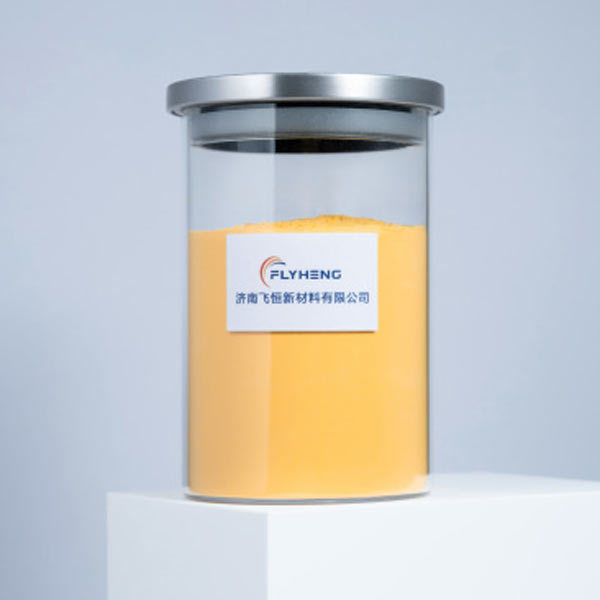Enhancing PVC Performance: The Role of Internal Lubricants
Release time: 2025-07-03
Enhancing PVC Performance: The Role of Internal Lubricants
The use of **PVC** (polyvinyl chloride) in various applications, from construction to health care, is widespread due to its durability, versatility, and cost-effectiveness. However, the performance of PVC can be significantly enhanced with the incorporation of **internal lubricants**. This article delves into the critical role that internal lubricants play in improving PVC properties, the different types available, and their applications in various industries.
Understanding PVC and Its Challenges
PVC is a widely used thermoplastic polymer known for its strength and flexibility. However, it faces certain challenges that can impact its performance:
1. Thermal Stability Issues
PVC can degrade at high temperatures, leading to a loss of mechanical properties and color changes. This challenge necessitates the use of additives that can enhance its thermal stability.
2. Increased Friction During Processing
The processing of PVC often involves high shear rates, which can create excessive friction. This friction can lead to processing difficulties, including melt fracture and poor surface quality.
3. Poor Flow Characteristics
PVC can exhibit inadequate flow properties during extrusion and molding processes. This limitation can affect the ability to produce intricate shapes and designs efficiently.
The Science Behind Internal Lubricants
Internal lubricants are additives that help reduce friction within the polymer matrix, improving flow characteristics and enhancing the overall performance of PVC. Understanding their function is crucial for manufacturers looking to optimize their formulations.
1. Mechanisms of Action
Internal lubricants work by modifying the viscosity of the polymer melt, reducing friction between polymer chains. This leads to improved flow and reduced processing temperatures, ultimately enhancing the quality of the final product.
2. Types of Internal Lubricants
There are various types of internal lubricants used in PVC formulations:
a. Fatty Acid Esters
Fatty acid esters, such as **stearates**, are commonly used due to their effectiveness in reducing friction and enhancing the thermal stability of PVC.
b. Polyethylene Wax
Polyethylene waxes are excellent internal lubricants that provide excellent processing characteristics while improving surface finish.
c. Organoclay
Organoclays can act as internal lubricants by providing a unique layered structure that modifies the flow behavior of the polymer melt.
d. Metallic Stearates
Metallic stearates, including calcium and zinc stearate, serve dual purposes as internal lubricants and stabilizers, enhancing the overall performance of PVC.
Benefits of Internal Lubricants in PVC
Incorporating internal lubricants into PVC formulations provides numerous advantages.
1. Enhanced Processability
Internal lubricants significantly improve the flow characteristics of PVC, allowing for smoother processing and more intricate designs.
2. Improved Mechanical Properties
By reducing friction and enhancing the thermal stability of PVC, internal lubricants help maintain and even improve the mechanical properties of the material.
3. Better Surface Finish
The use of internal lubricants results in a superior surface finish, reducing defects and enhancing the aesthetic appeal of the final product.
4. Cost-Effectiveness
Improved processing efficiency can lead to reduced energy consumption and operational costs, making the use of internal lubricants a financially sound decision.
Applications of Internal Lubricants in PVC
Internal lubricants have a wide range of applications across various industries, enhancing the performance of PVC products.
1. Construction Industry
PVC is widely used in construction for pipes, windows, and siding. The incorporation of internal lubricants improves the durability and flexibility of these products, ensuring longevity and reliability.
2. Automotive Sector
In the automotive industry, PVC components benefit from enhanced resistance to heat and friction, making them ideal for various applications, including interior trim and protective coatings.
3. Electrical Applications
PVC is a common material for electrical insulation. Internal lubricants help maintain the electrical properties of PVC while improving its processing characteristics.
Formulating PVC with Internal Lubricants
Successful formulation of PVC with internal lubricants requires a deep understanding of polymer chemistry and processing techniques.
1. Selecting the Right Lubricant
Choosing the appropriate internal lubricant depends on the specific application and desired properties. Factors to consider include compatibility with PVC, processing temperatures, and the end-use requirements.
2. Balancing Additives
It's crucial to balance the amount of internal lubricant with other additives in the formulation to avoid compromising the mechanical properties of PVC.
3. Testing and Optimization
Conducting thorough testing is vital to optimize the formulation. This includes evaluating the flow characteristics, mechanical properties, and thermal stability of the resulting PVC compound.
Future Trends in Internal Lubricants for PVC
As the demand for high-performance PVC products continues to grow, the role of internal lubricants is evolving.
1. Sustainable Solutions
With a growing emphasis on sustainability, the industry is exploring bio-based and environmentally friendly internal lubricants that offer similar performance benefits.
2. Advanced Compounding Techniques
Innovations in compounding techniques enable manufacturers to create tailored PVC formulations that maximize the benefits of internal lubricants while minimizing environmental impact.
Frequently Asked Questions (FAQs)
1. What are internal lubricants in PVC?
Internal lubricants are additives that reduce friction within the PVC matrix, improving its processing characteristics and overall performance.
2. How do internal lubricants affect PVC properties?
They enhance processability, improve mechanical properties, and provide better surface finishes, leading to higher quality final products.
3. Are there any environmental concerns with using internal lubricants?
While many internal lubricants are synthetically derived, there is a trend towards developing bio-based options that have a reduced environmental impact.
4. Can internal lubricants be used in all PVC applications?
While they can enhance many applications, the choice of lubricant should be tailored to specific end-use requirements and processing conditions.
5. How can manufacturers optimize their PVC formulations with internal lubricants?
By carefully selecting the right lubricant, balancing additives, and conducting thorough testing, manufacturers can create optimized formulations that meet their specific needs.
Conclusion
The integration of internal lubricants into PVC formulations is essential for enhancing the material's performance and expanding its application potential. Through improved processability, mechanical properties, and surface finishes, internal lubricants help manufacturers produce high-quality PVC products that meet stringent industry standards. As the industry evolves, continued advancements in lubricant technology will further enhance the capabilities of PVC, supporting innovative solutions across diverse sectors.
 sales@feihengchem.com
sales@feihengchem.com
 +8615665855919
+8615665855919 中文
中文 English
English España
España











